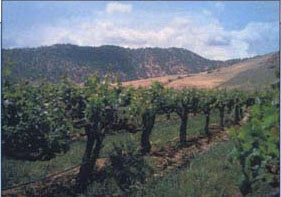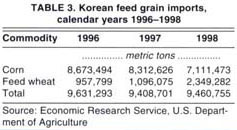All Issues
Why California is different: Nationwide, ‘Asian flu’ had impact
Publication Information
California Agriculture 53(5):10-11. https://doi.org/10.3733/ca.v053n05p10
Published September 01, 1999
PDF | Citation | Permissions
Full text
The effects of the Asian economic crisis on the U.S. farm economy were undoubtedly different from the effects on the state of California alone. There are agricultural examples across the nation where the Asian crisis had a clear impact. For instance, apple producers in the Pacific Northwest saw both the volume and value of fresh apple exports drop by about 15% in 1998, compared to 1997. The decline in exports has been attributed to reduced purchases by Thailand, Indonesia, and other Asian countries.
While the Asian flu had a significant impact in some commodity areas, the total effect was not as great as initially feared. For instance, Gajewski and Langley (1998) estimated that the value of U.S. agricultural exports to East Asia would fall by about 40% in each of fiscal 1998 and 1999. Sumner and Song (1999) also suggested the effects were large. But further analysis shows the drop in the value of U.S. agricultural exports was not as large as was predicted. Table 1 reports the dollar value of U.S. exports of agricultural commodities to East Asia (including Japan, China, Hong Kong, Indonesia, South Korea, Malaysia, Philippines, Singapore, Thailand, and Taiwan) over the past 5 years. The value of U.S. exports to the region in 1997 was $22.2 billion, and fell to about $18 billion in calendar year 1998. These data show that from 1997 to 1998, the value of U.S. exports to the region fell by 19%, and bulk commodities experienced the largest drop.
While the data document a nationwide impact to agriculture, the impact was less noticeable in California, because growers in this state tend to export high-valued consumer-ready products, which are aimed at high-income consumers. We know that food purchases by high-income consumers were less affected by the crisis than food purchases by others. The commodity breakdown in table 1 indicates that bulk commodity exports (such as wheat, soybeans, and cotton) suffered the largest drop in export value (down 26% from 1997 to 1998). The value of intermediate commodities (e.g., soybean oil, soybean meal, and animal products) fell by 11% during the height of the crisis. The export value of consumer-ready products (e.g., red meat, fruits, vegetables, and tree nuts) to East Asia fell by 15% in the same year.
In a 1998 publication, the U.S. Department of Agriculture forecast that the value of total U.S. agricultural exports would drop 3% to 6% in both fiscal 1998 and 1999, from the level that would have been attained without the Asian crisis (Gajewski and Langley 1998). U.S. export value of livestock was expected to fall by 5% to 6%, and horticultural products by about 4% . The USDA also projected that grain (corn and soybean) exports would fall by 2% in value in fiscal 1998 due to the “Asian flu.”
What were the actual effects of the Asian flu on the total U.S. farm economy? The value of total U.S. agricultural exports did indeed drop over the 2-year fiscal 1996-1998 period, from $59.8 to $3.6 billion (about 10% – see table 2). The fact that the value of trade for U.S. horticultural exports did not fall as projected by USDA does not necessarily mean the government projections were wrong, because it can always be argued that the export figures would have been higher without the crisis.
The USDA's projection of a 5% to 6% decline in livestock exports was not unreasonable, given the importance of the Asian market. Next to Japan, Korea is one of the most important importers of U.S. beef and beef products, accounting for about 12% of U.S. exports. The value of total U.S. beef exports has been relatively constant for the past 3 years, and U.S. exports of beef for calendar year 1998 actually grew in volume. However, both the volume and value of U.S. exports of beef to Korea fell by about 40% from 1996 to 1998.
In addition to beef, a decline in shipments of U.S. corn to Korea is attributed to the Asian crisis by some observers. However, the situation with corn is not so obvious. It is true that South Korea's livestock feed consumption did decline in 1998, with reduced livestock numbers. In fact, feed grain usage in Korea (and in some other key Asian nations) is on a declining trend, partly because of the impact of increased meat imports. But we cannot look at corn in isolation. Feed wheat represents as much as 20% of South Korea's compound feed in some years. Korea's imports of corn did fall by about 1.6 million metric tons from 1996 to 1998 (table 3). However, the Koreans imported feed wheat instead of corn – table 3 shows that feed wheat imports increased by 1.4 million metric tons from 1996 to 1998.








